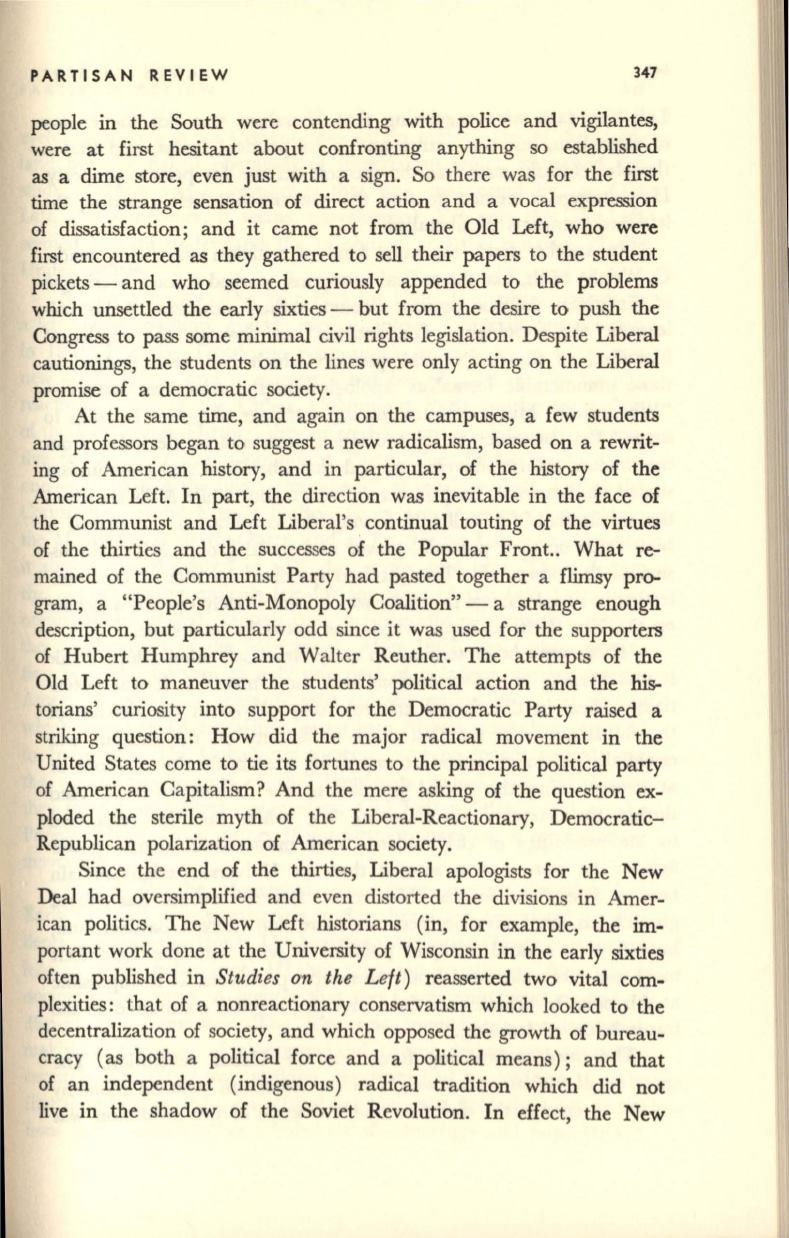
PARTISAN REVIEW
347
people in the South were contending with police and vigilantes,
were at first hesitant about confronting anything so established
as a dime store, even just with a sign. So there was for the first
time the strange sensation of direct action and a vocal expression
of dissatisfaction; and it came not from the Old Left, who were
first encountered as they gathered to sell their papers to the student
pickets - and who seemed curiously appended to the problems
which unsettled the early sixties - but from the desire to push the
Congress to pass some minimal civil rights legislation. Despite Liberal
cautionings, the students on the lines were only acting on the Liberal
promise of a democratic society.
At the same time, and again on the campuses, a few students
and professors began to suggest a new radicalism, based on a rewrit–
ing of American .history, and in particular, of the history of the
American Left. In part, the direction was inevitable in the face of
the Communist and Left Liberal's continual touting of the virtues
of the thirties and the successes of the Popular Front.. What re–
mained of the Communist Party had pasted together a flimsy pro–
gram, a "People's Anti-Monopoly Coalition" - a strange enough
description, but particularly odd since it was used for the supporters
of Hubert Humphrey and Walter Reuther. The attempts of the
Old Left to maneuver the students' political action and the his–
torians' curiosity into support for the Democratic Party raised a
striking question: How did the major radical movement in the
United States come to tie its fortunes to the principal political party
of American Capitalism? And the mere asking of the question ex–
ploded the sterile myth of the Liberal-Reactionary, Democratic–
Republican polarization of American society.
Since the end of the thirties, Liberal apologists for the New
Deal had oversimplified and even distorted the divisions in Amer–
ican politics. The New Left historians (in, for example, the
im–
portant work done at the University of Wisconsin in the early sixties
often published in
Studies on the L eft)
reasserted two vital com–
plexities: that of a nonreactionary conservatism which looked to the
decentralization of society, and which opposed the growth of bureau–
cracy (as both a political force and a political means); and that
of an independent (indigenous) radical tradition which did not
live in the shadow of the Soviet Revolution. In effect, the New


